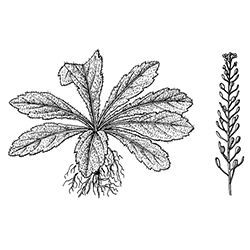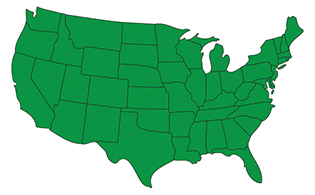

Virginia Peppergrass
Lepidium virginicum
Virginia Peppergrass can grow either as a winter or summer annual broadleaf weed. This versatile plant is also commonly known as Virginia Pepperweed, Virginia Peppercress, Poor-man’s Pepper and Pepper-grass. Its scientific name is Lepidium virginicum.
Identify

Upright

Lobed

Obovate
Virginia Peppergrass can be identified by its basal rosette of deeply lobed leaves. The vertically growing, branched stems develop in early spring and are covered with tiny hairs. Its basal and lower leaves lack hairs and are pinnately lobed. Additionally, the basal leaves do not persist on mature plants. The name Peppergrass (or Pepperweed) comes from the fact that young leaves and mature capsules of this broadleaf weed have a peppery taste. Blooming from May through early summer, Virginia Peppergrass produces finger-like clusters of white flowers forming at the top of the plant. Reproduction occurs by seeds, and this winter or summer annual has a slender taproot with secondary fibrous roots.
Life Cycle
This broadleaf weed grows in areas of thin, low-maintenance grass, including waste areas, and it prefers dry areas that receive a lot of sun. Virginia Peppergrass has been found throughout the United States and much of Canada.

Control
Proper cultural practices, such as proper mowing and watering, can help prevent Lepidium virginicum by creating dense grass, which inhibits this broadleaf weed’s ability to grow. Physical removal (i.e., pulling weeds) can be effective, though you run the risk of spreading the seeds to additional areas of your lawn.




Facebook
X
Youtube
Copy Link
Email